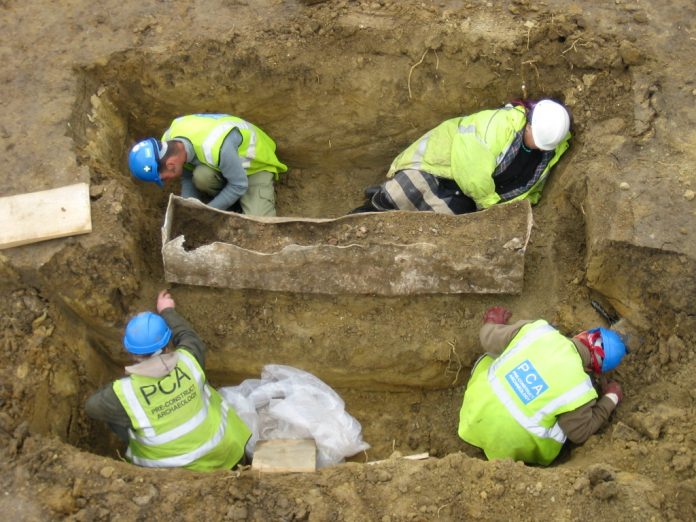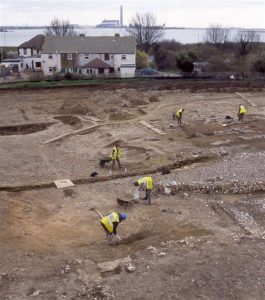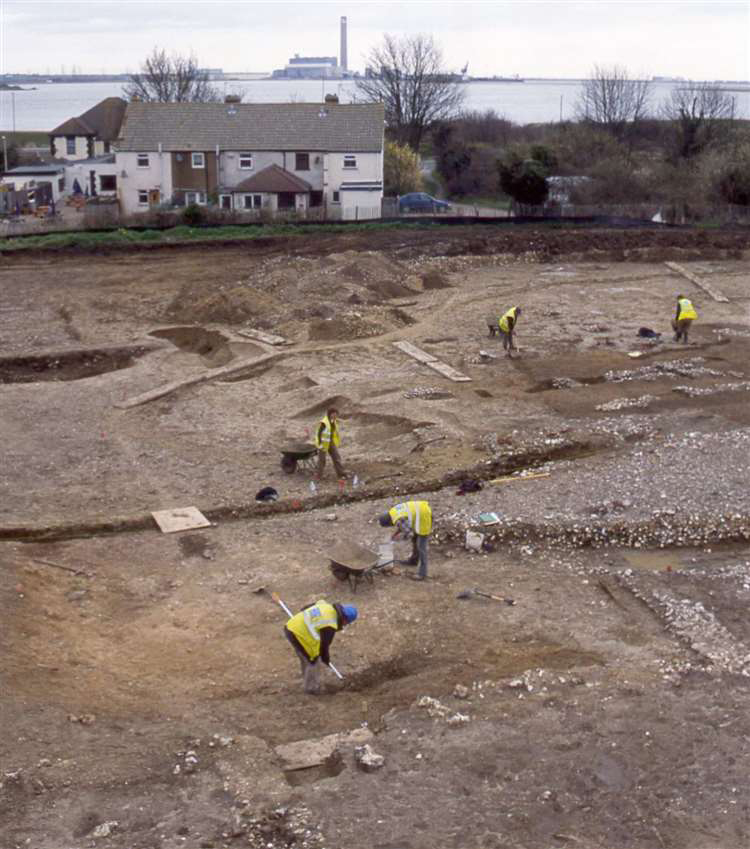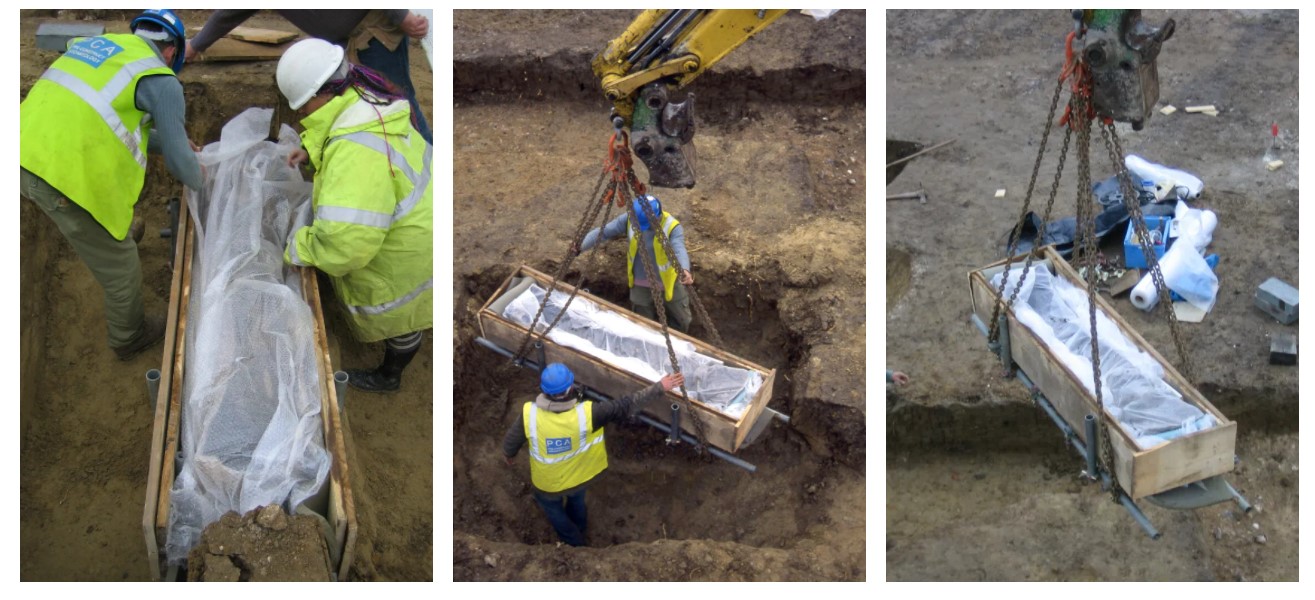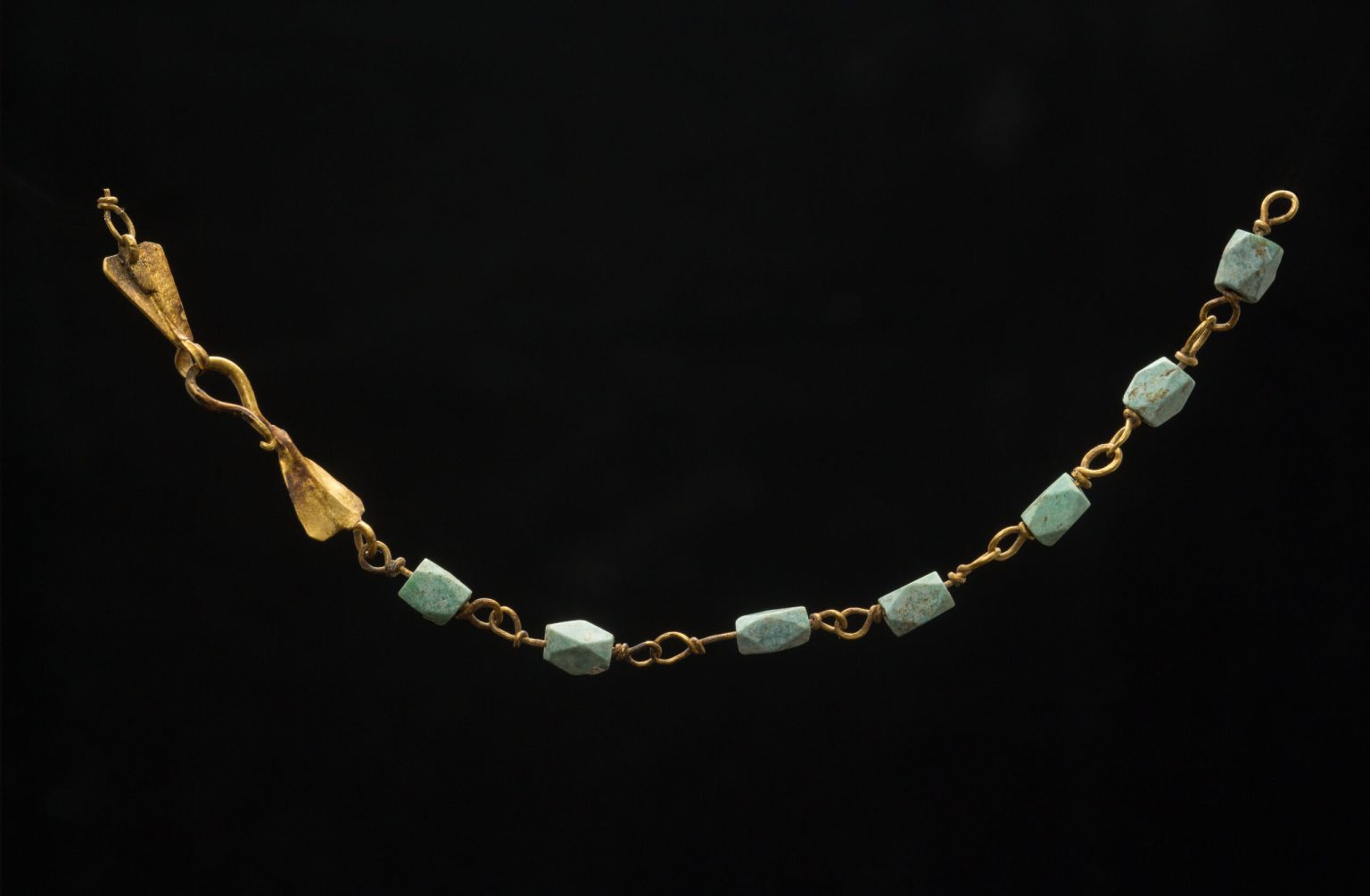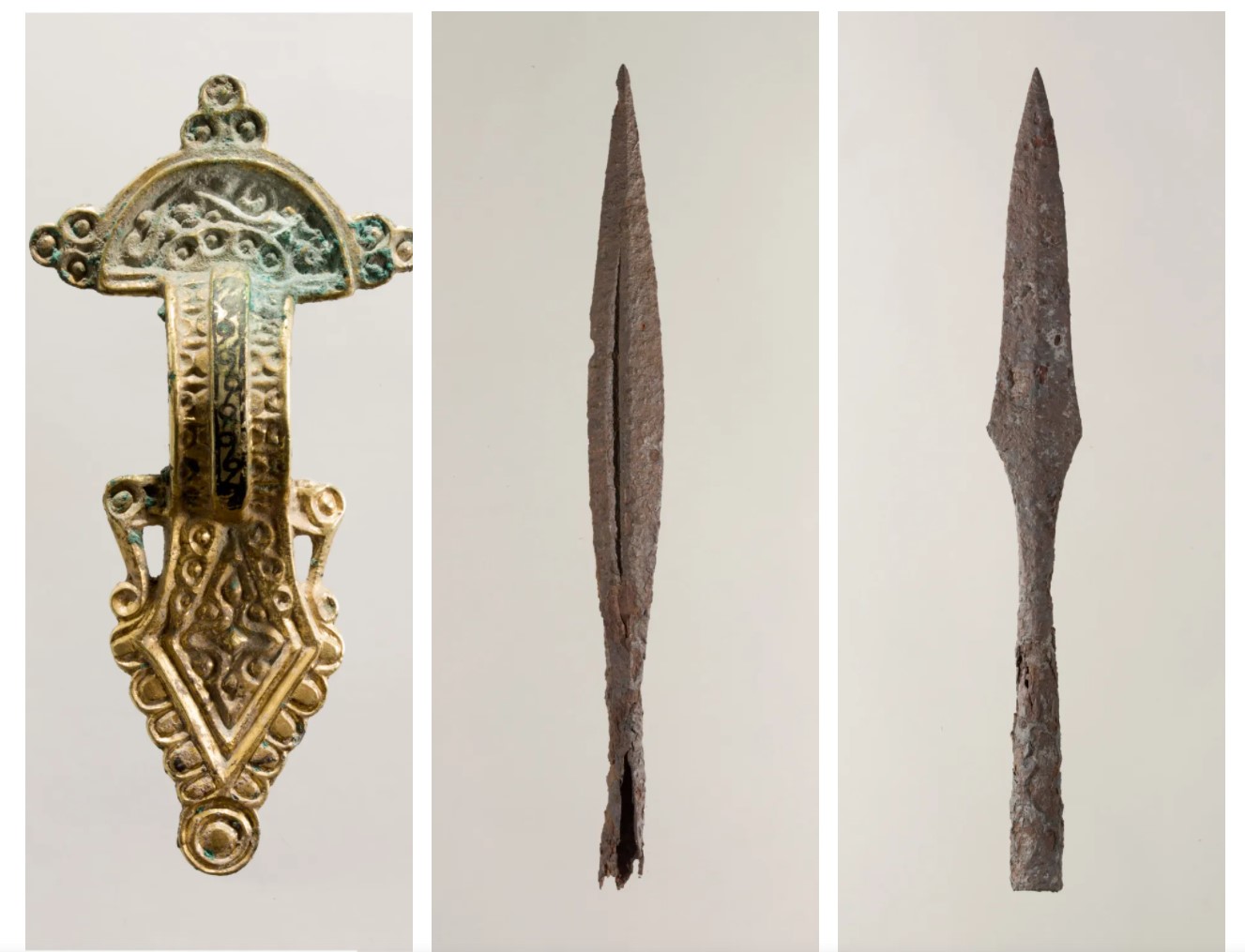Lead Coffin prepared for lifting. Image credits © Pre-Construct Archaeology
Evidence of unusually large-scale extraction of silver is one of several fascinating discoveries at an archaeological site in Kent. Intriguingly, a mausoleum containing a lead-lined coffin, itself a rare find in Roman Britain, dominated the landscape here for more than 700 years. This imposing monument bore witness to the departure of the Romans as the empire fell, and subsequently became a landmark for Anglo-Saxon tribes arriving along the River Medway, with its ruins inhabited by owls.
‘By the Medway Marsh’, the latest publication by Pre-Construct Archaeology, is a culmination of years of research following an archaeological excavation at Grange Farm in Kent, undertaken in 2005 ahead of a housing development. A vivid picture has emerged of an enduring human presence at the site, from fleeting visits during early prehistory to a dramatic bombing of the landscape during the Second World War.
First inhabited by a farming community in the Late Iron Age (around 100BC), the site’s significant location just over a mile north of Watling Street, one of the main roads in Roman Britain, led to dramatically increased activity during the post-conquest period. By the second century AD a road crossed the site, linking Watling Street, which ran between Dover and London, with marshlands to the north, then an important centre for the manufacture of salt and ceramics. By the fourth century a new settlement incorporated an ‘aisled building’, a wooden structure common in Roman Britain, divided into three parts: one end devoted to high-status accommodation, with fireplaces in the middle and an area for metalworking at the other end. A huge amount of litharge – a by-product of the ‘cupellation’ method of silver extraction – was unearthed; weighing 15kg, it’s the most ever found at a site in Roman Britain, representing silver extraction on an industrial scale.
James Gerrard, co-author and senior lecturer in Roman Archaeology at Newcastle University said; “Quite why people were refining silver from silver-rich base metal alloys is a mystery. Quite what the objects being melted down were is a mystery too. One would imagine that silver refining, part of the late Roman precious metal economy, closely tied into the tax-military pay cycle, would have occurred within an official or semi-official context. Yet Grange Farm was a small scale rural settlement. It is very unusual. Maybe they were making silver objects like the ingots in the Canterbury Treasure.’”
The construction of a Roman mausoleum here is another highly unusual aspect to the site, more commonly found with villas rather than aisled buildings. The monument would have stood almost two storeys high, with a tessellated pavement of plain red mosaic, also rare in Roman Britain. The lead-lined coffin within the mausoleum held the remains of a middle-aged high-status woman. Dr Gerrard adds ‘She had quite a hard life though. She had osteoarthritis but she lived to a good age and was buried with reverence. She was no peasant.‘
The grave was disturbed in the 5th Century but the monument remained standing in a ruinous state until the Norman Conquest, when the land, recorded as having ‘pasture, a probable tidal mill and six unfree peasants‘, was given to Bishop Odo of Bayeaux, half-brother of William the Conqueror, but it was not completely deserted in the intervening period:
‘We’ve got tawny owl pellets,’ said Dr Gerrard. ‘The building becomes ruinous and then you’ve got owls living here… it’s the end of the Roman Empire, the mausoleum is abandoned and the owls take up residence – we can’t be too precise about when that was but it would have been somewhere between the 5th and 10th Century.‘
The story continues with the arrival of the Anglo-Saxons – ‘This is where it gets interesting‘ according to Dr Gerrard. ‘You’re in Kent at the forefront of Anglo Saxon migration. It looks like people are coming to this monument and interacting with it in some way but they’re not living there and they’re not burying their dead there‘.
The significant finds from this period suggest that the mausoleum may have revered as a sacred place.
Situated on an elevated terrace with far-reaching views, the mausoleum would have been visible for miles around and is very likely to have been used as a landmark, or navigational aid for people arriving along the river. ‘It’s the 5th Century and water was more important as a means of travel‘, Dr Gerrard explains.
During the medieval period, the area around Grange Farm was dominated by a manorial centre and elements of this structure still stand today.

